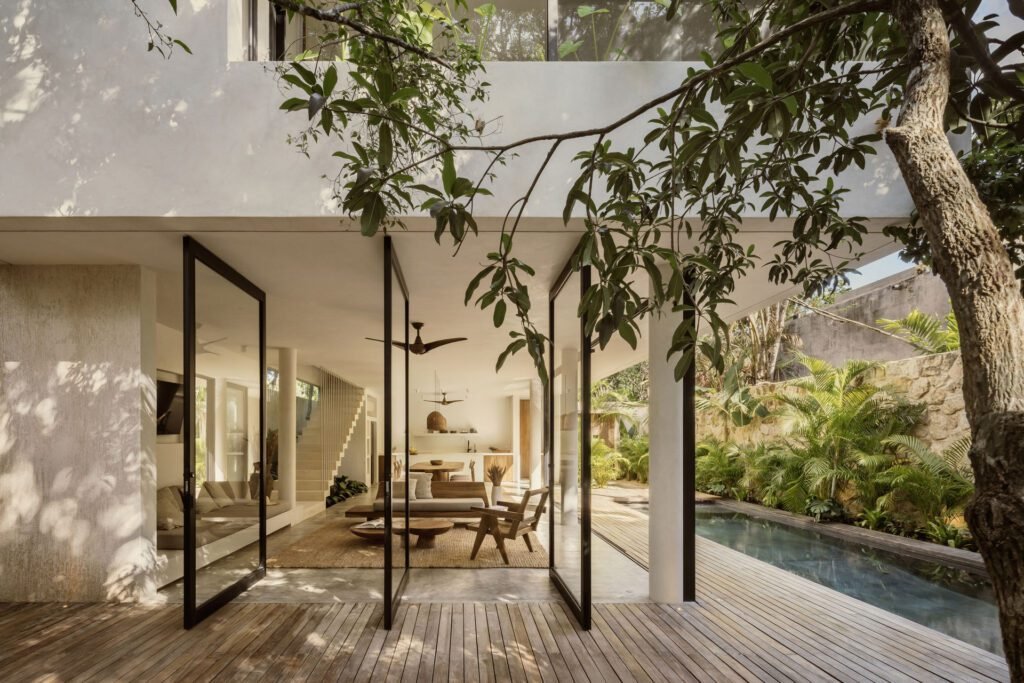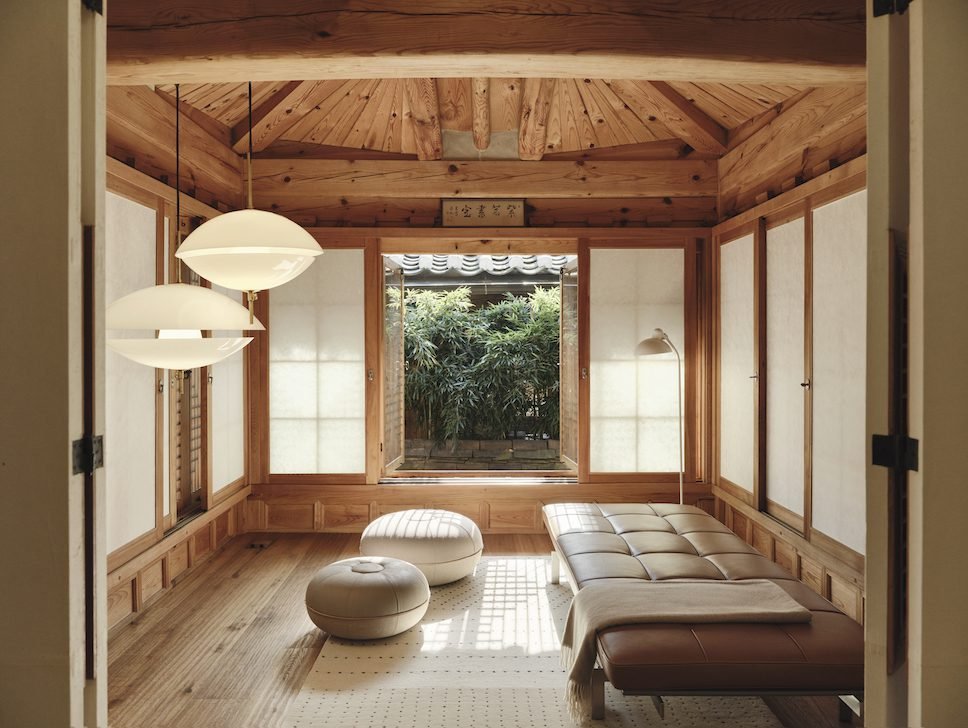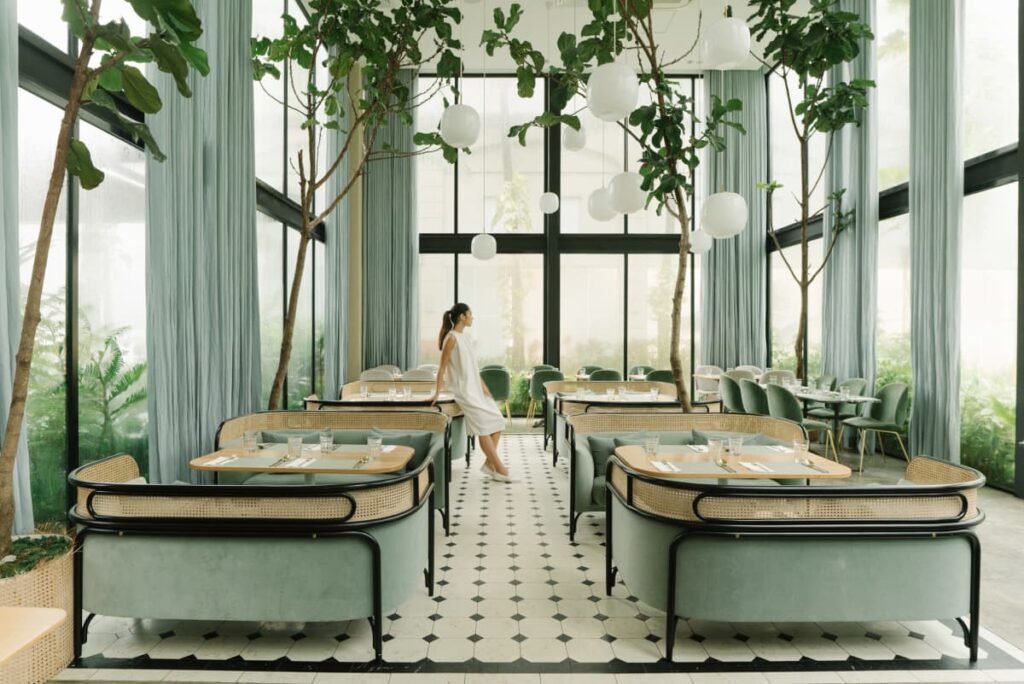What is design firstly, well for me it is the consideration of an elements purpose, functionality and the way it looks. Design is all around us and whether it is good or bad, it has still been planned by someone. What If we could design for impact, what if how we design had a greater purpose and affected how we feel, in turn having a beneficial impact on our health. It makes sense to design with intent, but how do we do this and what do interiors without this look like. Let’s talk about tranquillity in design. This may mean different things to different people, but let’s talk about what it actually means?
The quality or state of being tranquil; calm, this is a feeling right and what creates feelings, a mix of ingredients, our emotions, our mindset and our environment. Can we change our environment to enhance our mental health, absolutely.

Photo Credit: Casa-Areca
Not everyone needs a calm tranquil space, but studies have shown that a tranquil space can improve sleep and reduce stress and who couldn’t do with help in both these departments, if we are less stressed and can sleep better, these are the ultimate health benefits, which have a knock-on effect on our day to day mood and motivation, which in turn can effect our personality, improving friendships/business relationships along with amping up our productivity and I for one can always benefit from this. Now ask yourself, does your environment matter?
Tranquillity in design is all about creating a space where the sound and visual story create a calming balanced space. A tranquil space is one that you resonate with and being surrounded by memories or reminders of what life is all about is what is important.
There are so many ways that we can create an environmentally tranquil space such as by incorporating elements that bring us closer to nature, simplicity and the living earth. We can create our own little piece of heaven in the form of an Internal courtyard or central garden.
This is where a designer and an Architect need to work together to make the end result one that makes a feature like this visible from many angles, which can be done by creating different zones such as lounging, reading, dining and seating areas.
The use of Biotic materials that are close to the earth and nature and all that is genuine will create a purer design. We see woods, such as (rattan, bamboo, bark, etc.) natural fibres such as (silk, wool, cotton, flax, hemp, jute, kapok, kenaf, moss, linen etc.)
These are implemented with the use of flooring and furniture being the wood and the fibres being used on the textiles such as fabric furniture, cushions and throws, also with beautiful calming panels of linen for window dressings, all building on a very harmonious palette.
Making natural lighting the forefront in designing the shell of the building is essential, as it improves our circadian rhythm and sleep patterns, encourages productivity and uplifts mood along with aiding our bodies in producing Vit D which is so important for overall health.
Creating daylight wells is a nice way to make this a possibility.
Ensuring we get enough of this vital resource is key to our physical and psychological wellbeing.
Providing opportunities for people to improve their health sets a tone in a space, so incorporating a water Fountain would be a good step.
Considering Lighting and how and where it is executed is important, what lighting will suit daytime hours and evening hours. Thinking about ambient lighting will really amplify the tone of the space.
An essential part of our existence is breathing right, but how often do we consider the quality of the air we breathe. The minimum is to open our windows, but this can only do so much, air purifiers can also be added as another measure.
A home should feel like your safe haven, your comfort zone. This can be done through security measures, but emotionally by being a space that reflects you and your personality. Clutter is not conducive to creating a sense of serenity, so ideally avoid this when aiming to achieve a calm space, as it creates too much chaos in our minds.
Creating zones within your home or office specifically aimed at giving opportunities for gratitude or meditation will really add to creating a space that gives off a true sense of serenity and tranquillity, these can be yoga or meditation zones or even reading nooks.
If you have any sort of Spirituality or faith, then considering symbolism and how you can incorporate it in your space will add to the sense of zen and overall calm. It adds a feeling of connection.

Photo Credit: L Fritz-Hansen-Seoul-Living-room
The act of grounding is also beneficial to our health both physically and mentally so consider having some grass like spaces to practice this, along with building a large planter to grow your own produce.
Using nature and earth like tones can set a basis for a palette of a tranquil space. Setting the right Temperature for the space is also important.
Sound is another key way to add to the sense of tranquillity particularly listening to Solfeggio frequencies with beats of 417hz which are supposed to help with wiping out negative energy.

Photo Credit Shanqin-Bay 22
Your space should give you a feeling of contentment, a feeling that this is the right place for you, a positive influence on you.
Your day should benefit from the space you are surrounded by for the better. This is not limited to how it looks although this is important. For me, functionality is key and this should be planned into the original design. If you are not asking yourself what is my daily schedule, what are my paint points in my day, then this is where you are going wrong.
Simply deciding what you like or looking at the latest trend is not design, matching color and texture is not design. Making informed designs after pre planning a space and every single tiny element of it, is design. Ask yourself?
Is the location of my desk in my office at a bad angle, is the boardroom not comfortable, is it too warm?
Is my kitchen functional in turn allowing me to have a great start to my day. It’s about thinking of all the small things that make life easier for you, so you can avoid the stress that comes with disorganisation and chaos.
I use my own kitchen as a strong example of this, but this is very much relevant to the way we live. We did not fit this kitchen, so the design is not my choosing, it is a box kitchen in terms of layout. It does not have any of the corner carousels which is a big problem.
For our lifestyle, this kitchen does not function well, therefore causes me stress daily, hence my passion for this topic. Due to the shape of it, it lacks opportunity for more that one person to comfortably work in the space due to the main food prep areas being in the corner near the cooker or the other prep are not far from the sink. We also have some quite big appliances we use which often get in the way and would be more ideally planned into a utility/larder space.

Photo Credit: galley-kitchens-lookbook-Dezeen
This is why, it is essential to be 100 % aware of your needs and intensions before you renovate or build a space, be it either commercial or residential. What does this space need to do for me, how
am I going to problem solve to make this space an asset rather that a space that is seen in a negative light. Whilst designers are there to extract this information, we can only work around what you are
aware of and the stage that your project is already at.
I encourage you to think ahead, plan and pre-empt in order to achieve something that will really
meet your requirements, the aesthetics will be then built around this considering how you live.
In terms of aesthetic, you should look at a space and almost feel nothing, a zen like solitude at first,
then the wow can come, what this is, is a sense of peace, that the design elements work well, and nothing stands out as to not work, this should only last a couple of seconds then the brain kicks in to start studying points of interest individually.

Photo Credit: Radius Interior Design.
A calm tranquil interior would initially suggest a minimal Scandi style interior which I do agree can be very affective, but I also think it can be done with other styles that support a less cluttered approach and where the design is as much about the amenities and functionality as it is the interior design.
A space that has things you love can also create a Tranquil atmosphere, as can being surrounded by your own favoured items creating a feeling of security and belonging, which in turn makes us happy.
In summary A tranquil space is a considered space.

Photo Credit: by Dulux


